First Lieutenant William Russell Simmons
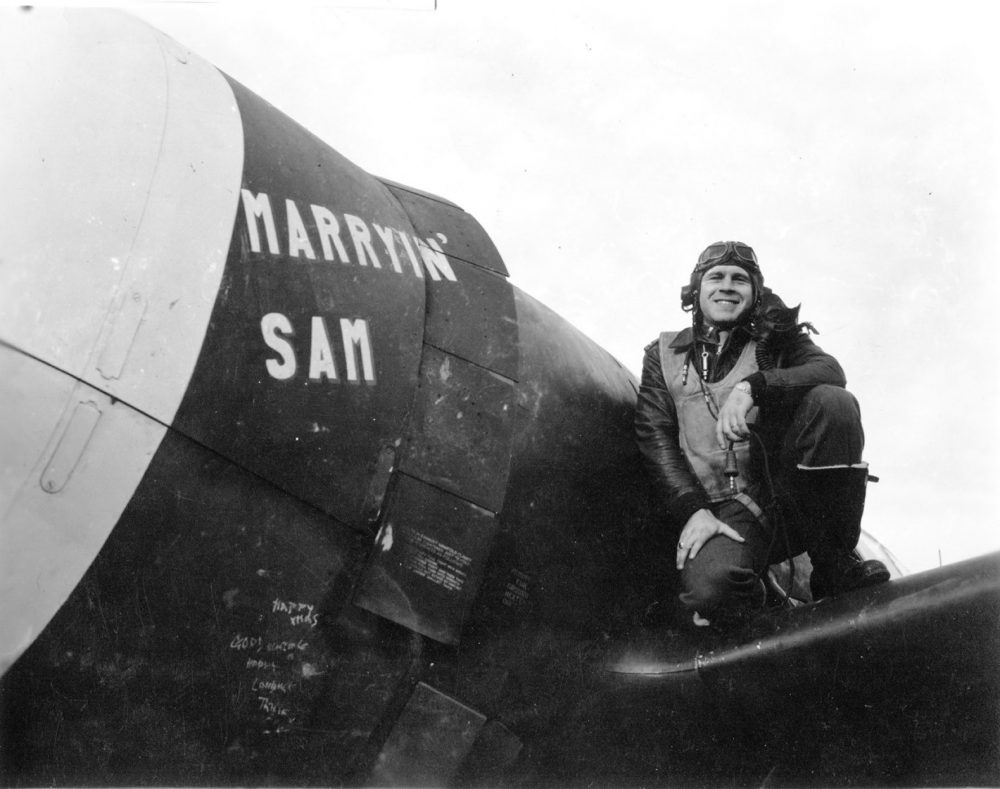
- Unit: 368th Fighter Squadron, 359th Fighter Group
- Service Number: O-675948
- Date of Birth: June 21, 1921
- Entered the Military: August 16, 1941
- Date of Death: June 11, 1944
- Hometown: Norfolk, Virginia
- Place of Death: south of Caen, France
- Award(s): Distinguished Flying Cross, Air Medal with 6 Oak Leaf Clusters, Purple Heart
- Cemetery: Plot B, Row 4, Grave 25. Normandy American Cemetery, Coleville-sur-Mer, France
Westfield High School
2014-2015
Early Life
William R. Simmons was the first born child of World War I veteran Russell Wilbur Simmons and his wife, Nellie May Hill, of Washington, D.C. Simmons grew up with a younger brother, James, and younger sister, Joan, in a neighborhood near the Washington Navy Yard. His father worked there as an aviation mechanic for the U.S. Navy. About the time Simmons attended high school, the family moved to Portsmouth, Virginia. In Norfolk, Virginia, Simmons joined the U.S. Army Air Forces. Like his father who served overseas in World War I, William would serve overseas in World War II.
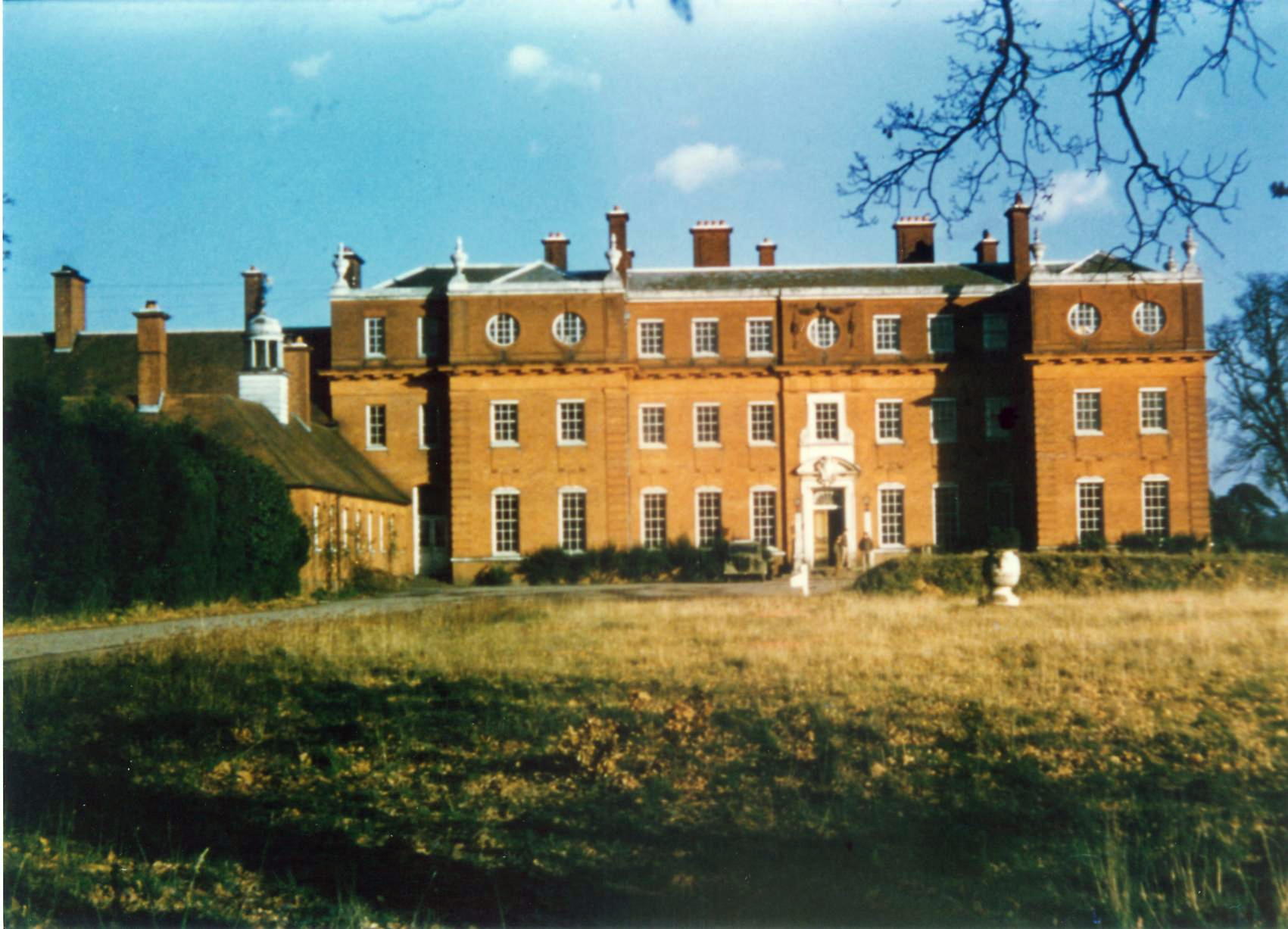
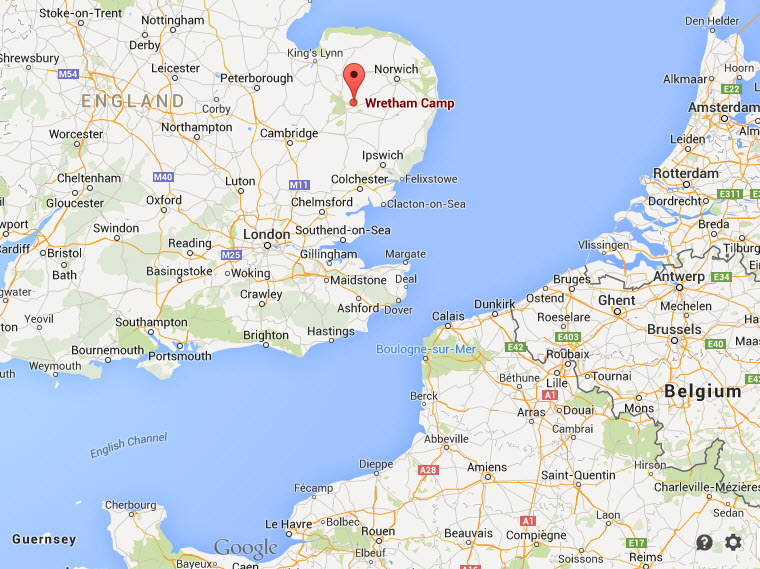
Military Experience
Initial Training
Enlisting in the U.S. Army Air Force on August 16, 1941, Simmons was extensively trained as a pilot, commissioned as an officer, and assigned to the 359th Fighter Group, 368th Fighter Squadron at Westover Field near Springfield, Massachusetts in 1943. He attended basic training in Missouri, basic aviation training in Mississippi, and single-engine advanced pilot training in Texas. Simmons was finally trained to fly P-47 Thunderbolts in Massachusetts before his one and only squadron assignment with the 368th Fighter Squadron. Nearly two years after enlisting, and just before deployment overseas, Simmons returned home to marry his love, Christine Tabit of Norfolk, Virginia, on June 4, 1943.
Deployment to East Wretham Field, United Kingdom
Just a few short months after his wedding, Simmons’s squadron readied to leave for Europe. Once staged at Camp Kilmer, New Jersey, in late September 1943, the Army no longer allowed service members to telephone or contact anyone outside of the camp, and all of his mail was censored. He finally boarded the Argentina, an army troop transport ship, with 7,000 other men and crossed the Atlantic Ocean bound for the U.K. Ten days later, they arrived in Liverpool, England, and boarded trains bound eastward, beyond London. The ultimate destination of Simmons’s squadron was Wretham Hall, a 52-room estate turned into barracks near the U.S. Army Airfield Station Number 133, just 90 miles northeast of London.
Initially, without planes, the pilots of the 368th filled their days with bicycling, ping-pong, ground training (not more than 2 ½ hours per day), reading, and day trips to Cambridge or London (See Figure 2). One such day trip, in late October 1943, resulted in Simmons returning to Wretham Hall with a music-making Victrola, and a puppy he named Zombie. Little changed in Simmons’s daily routine. Letters, packages, and V-mails were a highlight. Simmons and three of his roommates began hunting pheasant, returning one late November day with a half dozen birds they roasted in the fireplace of their room at Wretham Hall.
On the second anniversary of Pearl Harbor, December 7, 1943, Simmons and his roommate, Botsy, scrubbed the floor in their shared room at Wretham Hall while their fellow pilots were on liberty, free to do what they pleased. Nightly pheasant roasts and the mess from their puppy, Zombie, likely caught the attention of Simmons’s officer-in-charge. Meanwhile, Allied leaders Winston Churchill, Franklin Roosevelt and Joseph Stalin had just concluded their meeting in Tehran and reached a consensus on the post-war division of Europe, and Allied troops readied for their cross-channel invasion of Nazi-controlled France.
Finally Outfitted and Operational
The men of the 368th were finally trained, in position and outfitted with the required number of aircraft to begin operations. The unit became operational, December 13, 1943, and the same day Simmons flew his first mission. By the end of the month, the 368th had flown seven missions against the Axis forces: one easy sweep into northern France, two escort flights over Holland, two long-range support missions into the Calais area of France, an escort into Belgium, and close support of 64 B-17 Flying Fortresses that assaulted a Paris ball-bearing factory.
Simmons flew a total of 68 missions from December 1943- June 1944 in escort fighter airframes, specifically the P-47D Thunderbolt and P-51B Mustang.
Allied preparations for D-Day quickened and the operations of the 368th highlight the air-ground campaign. In January the squadron began its first bomber escorts to Paris. In February, flights increased by 50 percent because of the Allied effort to weaken the German Luftwaffe’s factories, airports, control towers, and installations before D-Day. Two escort missions in one day were not out of the ordinary for Simmons and his fellow airmen. Simmons’s squadron completed their first bomb attack missions in March 1944: low-level bombings, thunder bombings, and targeted bombings–some as far as Berlin, Germany. Liberty, or free time, was curtailed. The numbers of free-time excursions from Wretham Hall were halved because of Allied fuel rationing and the quickened pace of air operations.
In April 1944, Simmons’s squadron was outfitted with new P-51 Mustang aircraft to replace older, more-often flown and familiar P-47 Thunderbolts. By May 1944, Simmons was flying 500 miles into combat as far away as Berlin, Germany and the Swiss border. As June 1944 approached, airmen of the 368th practiced bomb-diving maneuvers in anticipation of the largest sea and land invasion in history.
Operation Overlord, June 1944
The weather that postponed the original date for D-Day also grounded Simmons. But once Allied commander Dwight D. Eisenhower gave the order to launch the invasion on June 6, 1944, Simmons and his squadron were ready and worked through the night. Four thousand aircraft left the United Kingdom, changed course during the night, and bombed French port cities between Cherbourg and Le Havre in the early hours of June 6, 1944. They bombed roads, railroad tracks, trains, and hoped to engage enemy aircraft. In total, Allied Air Forces flew 14,000 sorties that day. Simmons’s squadron left in groups, staggered every hour, for missions lasting 6 hours. Twenty four hour flight operations were planned to keep pressure on the Axis forces during the first day of the invasion. Yet, Simmons and his fellow pilots saw practically no enemy aircraft.
Exceptionally bad weather prevented flights on June 9, but otherwise, Simmons flew a mission every day from June 6, 1944, until his last on June 11, 1944. On the morning of June 11, pilots of the 368th escorted B-26 Martin Marauder medium bombers to the Paris area. In the afternoon, they took off with 250 pound bombs and as bad weather began to roll in, they released their payloads near Falaise, France. On the return, the pilots of the 368th attacked truck convoys. Railroad tracks and boxcars southeast of Vire, France were also targeted. The pilots came home to Wretham Hall in pairs. All pilots returned that day, except Simmons. Anti-aircraft flak south of Caen, France broke his plane in two and he crashed. He was not even 24 years old.
Simmons earned an Air Medal for every ten sorties he flew in World War II. He was posthumously awarded the Purple Heart.
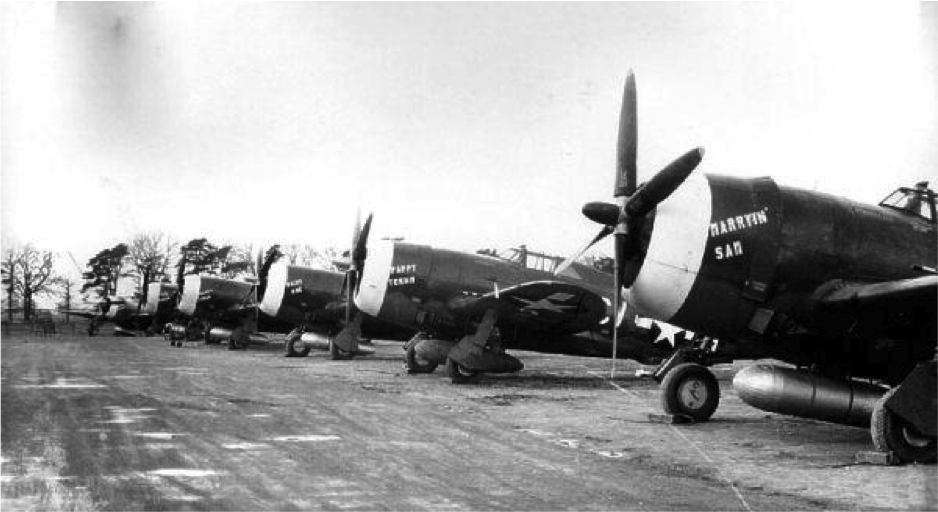
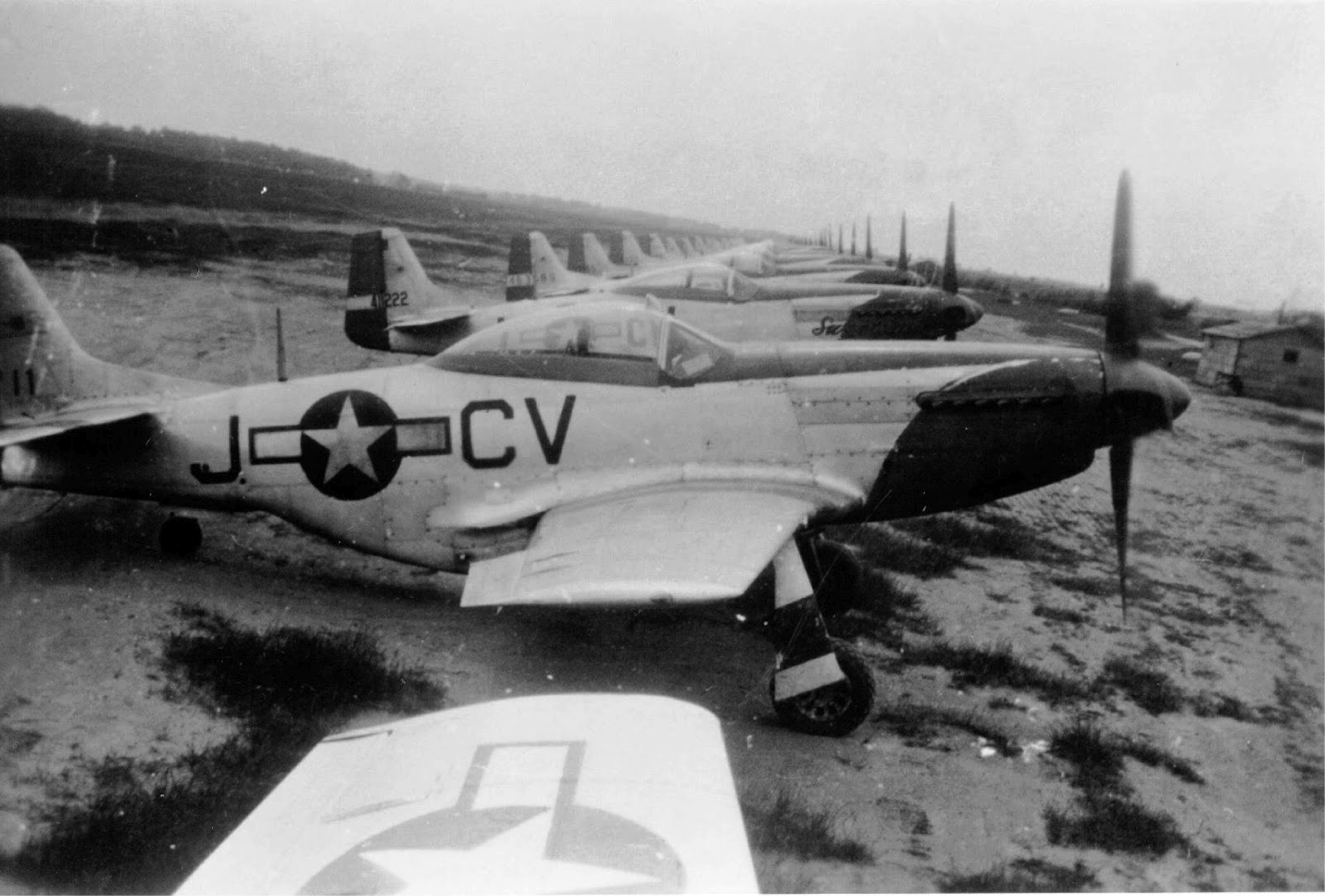
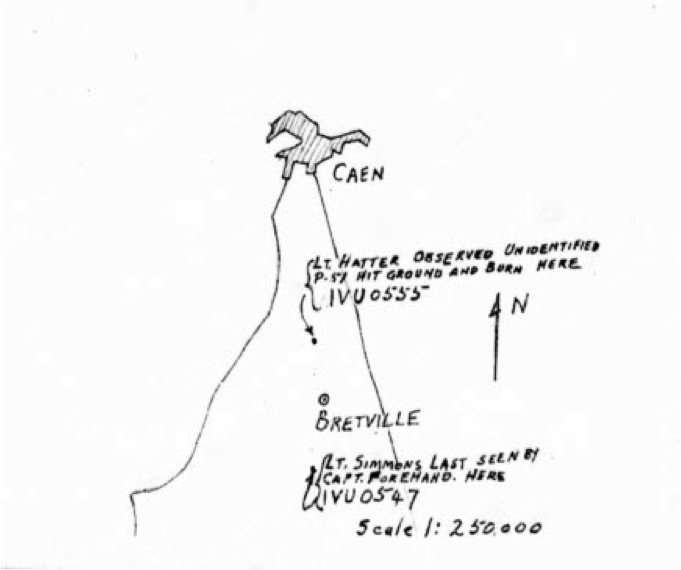
Eulogy
Simmons was buried in a temporary grave, on site, the day his plane crashed in a small town south of Caen, France (See Figure 5). A French family witnessed the crash and helped to identify him by the wedding ring he wore which was engraved, “Forever, June 3, 1943.” Simmons’ father made the decision to allow his son to rest in France. Simmons’s body remained in a temporary grave until April 29, 1949, when his remains were transferred to the Normandy American Cemetery overlooking Omaha Beach.
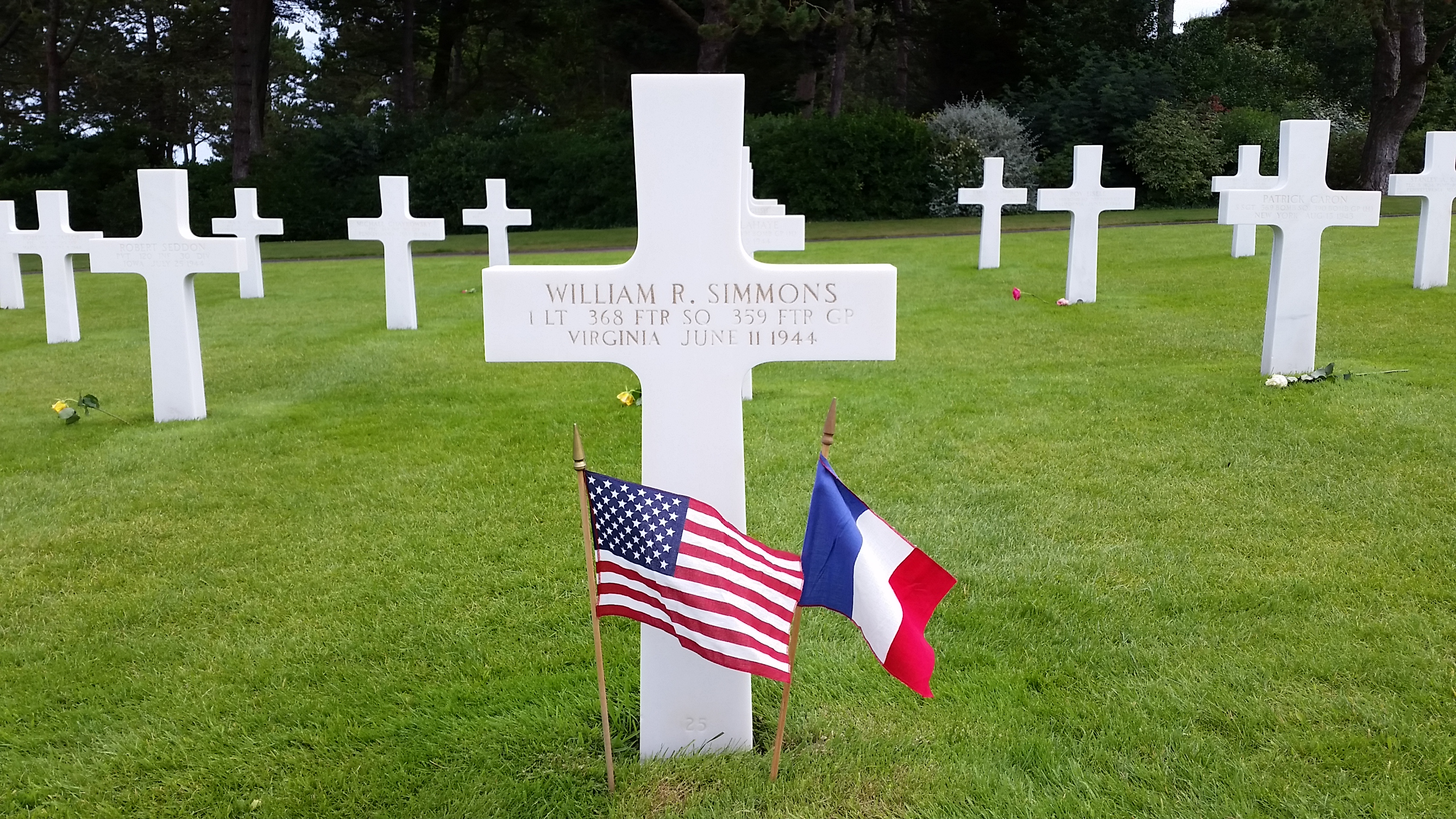
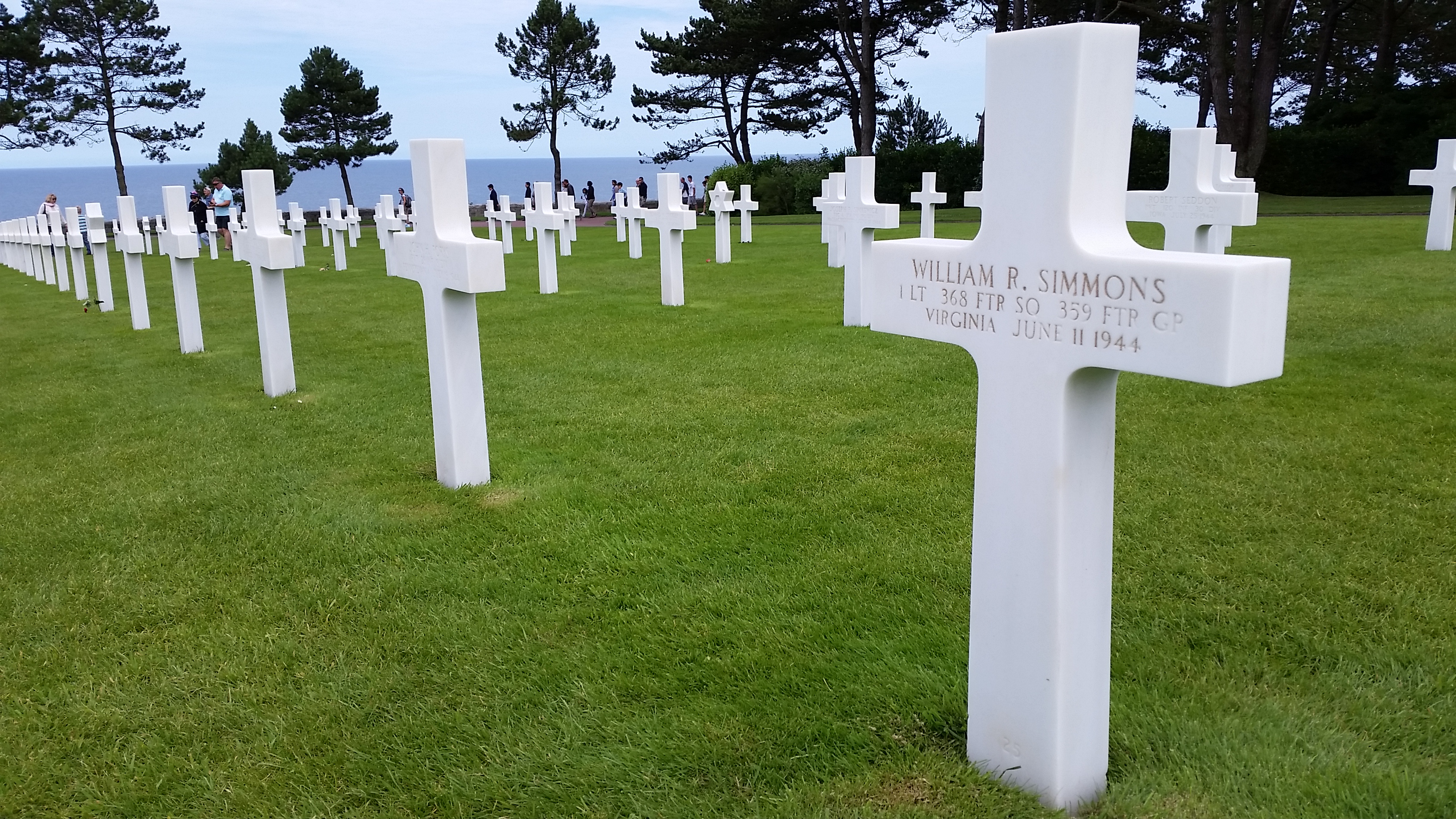
Reflection
Bibliography
“359th Fighter Group, 1943-1945.” 2015. Facebook. Accessed February 16, 2015. www.facebook.com/pages/359th-Fighter-Group-1943-1945/120987634620533.
Baldridge, Char. 2014. “History of the 359th.”
Cate, J.L., and W.F. Craven. 2014. “The Army Air Forces in World War II, VI Men in Planes.” Chapter 16 Basic Military Training And Classification Of Personnel. December 19. www.ibiblio.org/hyperwar/AAF/VI/AAF-VI-16.html.
Fogg, Richard, and Janet Fogg. Fogg in the Cockpit: Howard Fogg – Master Railroad Artist, World War II Fighter Pilot. Philadelphia: Casemate, 2011.
Forehand, William C. 1944. “Missing Aircrew Report William R. Simmons.” Military Personnel Records Center, National Archives and Records Administration, St. Louis.
“History of Keesler Air Force Base.” Keesler Air Force Base. October 11, 2006. www.keesler.af.mil/library/factsheets/factsheet.asp?id=4881.
“Mass Flight List Bill Simmons Missions.” 1944. Courtesy of Char Baldridge, Historian of the 359th.
“Russell Wilbur Simmons.” Ancestry. ancestry.com
Smith, Jack H. Mustangs and Unicorns: History of the 359th FG. Missoula: Pictorial Histories Publishing Co., 1998.
———. 359th Fighter Group. Oxford: Osprey Publishing, 2002.
“Westover Air Reserve Base.” Westover Air Reserve Base. April 3, 2015. www.westover.afrc.af.mil/AboutUs.
“William R. Simmons.” American Battle Monuments Commission. Accessed August 10, 2015. www.abmc.gov/search-abmc-burials-and-memorializations/detail/WWII_70641#.Vcj0X3FViko.
William R. Simmons, Individual Deceased Personnel File, Department of the Army.
This profile was researched and created with the Understanding Sacrifice program, sponsored by the American Battle Monuments Commission.

